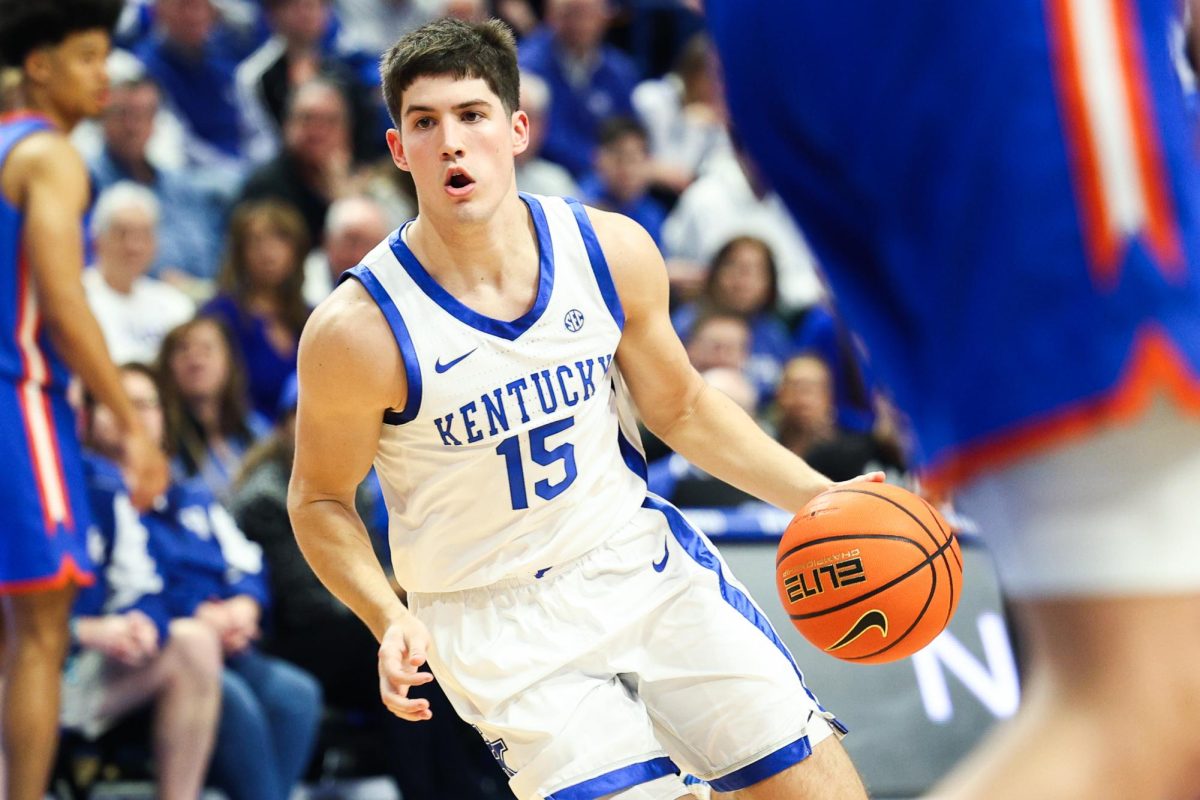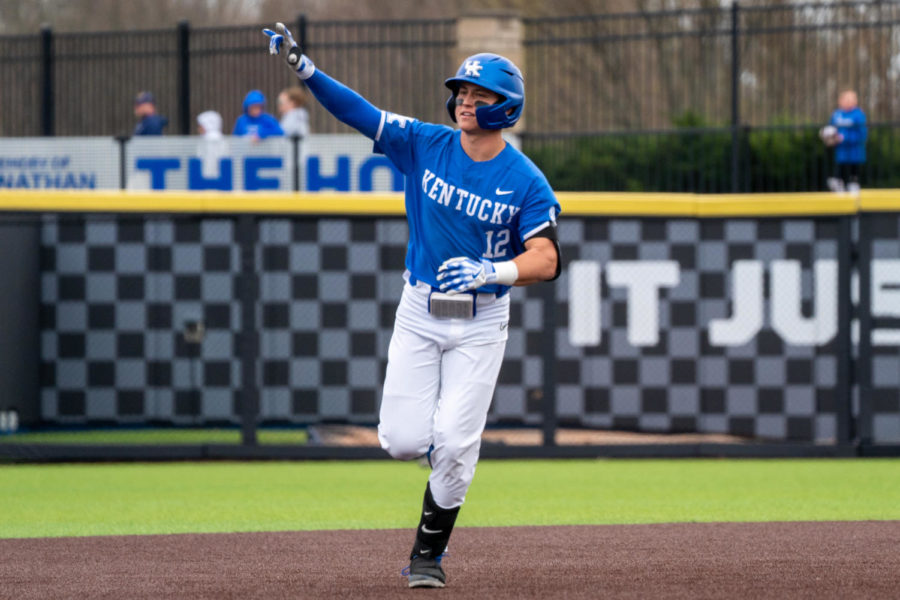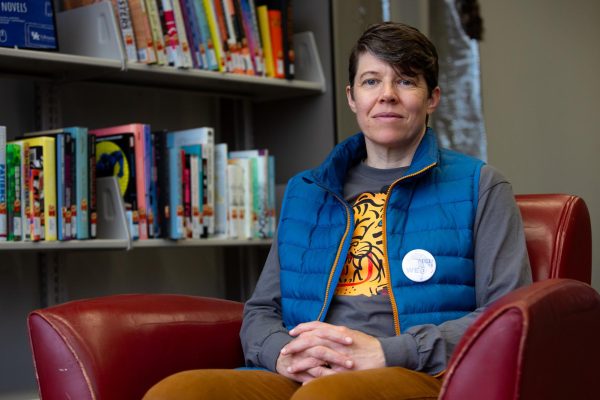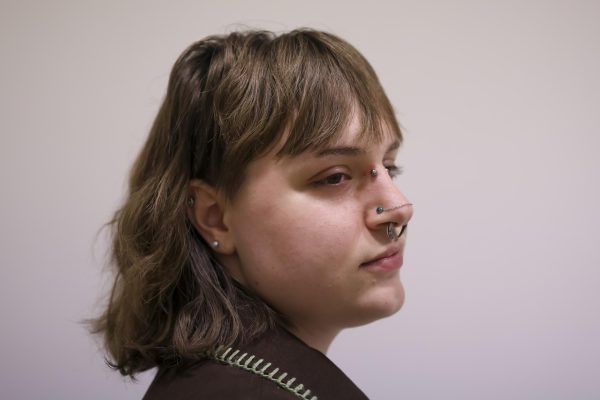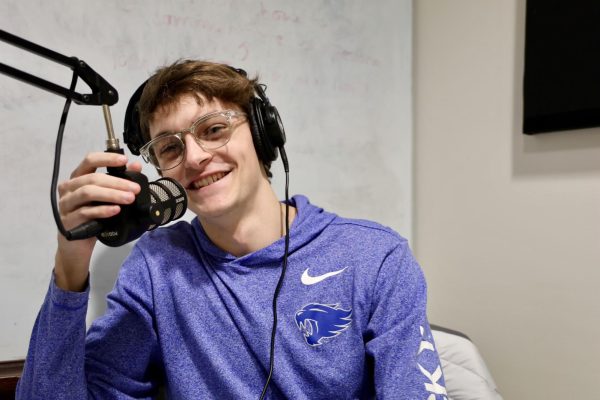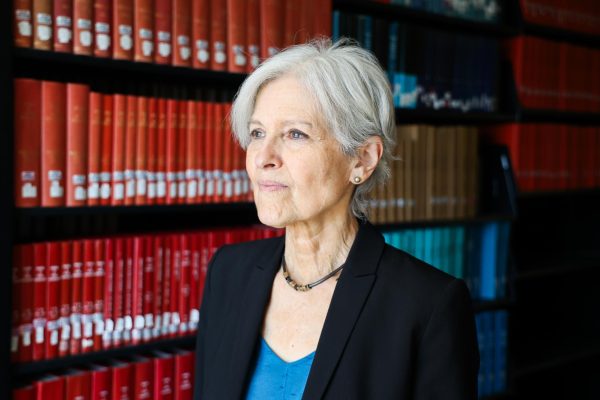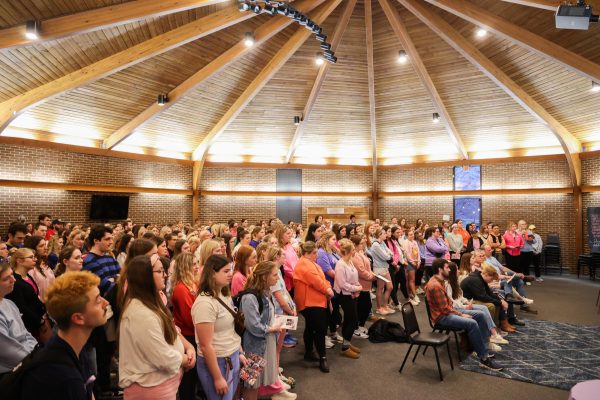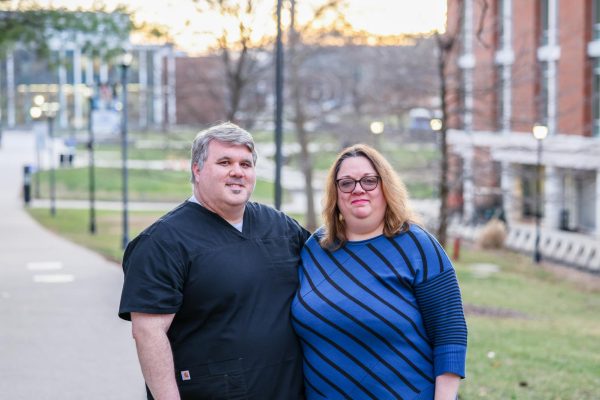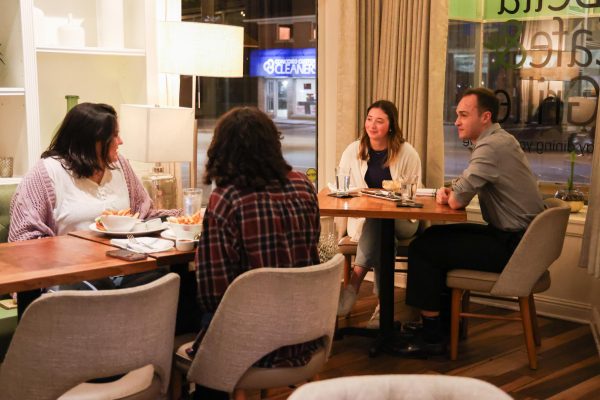Pope Villa shows Kentucky’s rich architectural history
March 3, 2016
Latrobe’s Pope Villa, located in the heart of Lexington, was built with innovation in mind by American designer Benjamin Henry Latrobe in the early 18th century, and stands today as one of the country’s greatest architectural prizes.
Latrobe, most known for his involvement in the design and construction of the White House and U.S. Capitol Building, continuously sought to bring creativity to his works, shown with the perfect-square structure and hand-crafted arches most unique to the time period in which the Villa was built.
However, after a fire ravaged the property leaving only a frame of the home, the Blue Grass Trust for Historic Preservation decided to save the structure in 1987 and from then on, interested travelers from around the world made their way to the home to learn about its unique qualities.
The Anderson family, visiting the area from Chicago, Illinois, was one of many to visit the home and take a tour that discussed some of the major points of the building’s structure, history and restoration.
“It gives me a sense of a passage of time when I see all these variations in the house,” Wayne Anderson said. “Sometimes its things you don’t think about when you just walk by your drive way and look quickly, you forget that there’s a bigger story.”
Sheila Ferrell, executive director of the Bluegrass Trust for Historic Preservation, who focuses her work with the public events, publications, fundraising, and general oversight of the Trust, discussed some of her favorite experiences with the property as well.
“Benjamin Henry Latrobe was born on May 1 and that is now the start of Preservation Month across the country,” Ferrell said. “Every year we open up Latrobe’s Pope Villa to the public and we have a birthday party.”
Ferrell also commented about the various benefits for students, specifically that of UK , to visit homes similar to Latrobe’s Pope Villa in order to further their knowledge about historical figures and their accomplishments.
“It is important for them to see a wonderful design of a house that was built by the father of American architecture that is two blocks from their campus,” Ferrell said.
In addition to learning about its history, Jason Sloan, director of preservation at the Bluegrass Trust for Historic Preservation, said that those who visit the property have the chance to learn about a number of interesting occurrences that have taken place at the Villa.
“One of the most fascinating things about this property is that the plan cleverly disguises a reconfiguration of ancient architecture, so as you walk through the house you encounter ancient forms and are able to learn more deeply about architecture in general,” Sloan said.
For Arne Anderson, a student at Cedarville University, hearing the story about a scientist discovering a mysterious hole in the wall at the Villa during one of his tours provided him with both an intriguing piece of information and motivation to keep visiting these rare gems of American history.
“It is a good lesson that curiosity is always essential to discovering new things and we can still live on as long as we are able to ‘kill the cat’ with our own curiosity,” Anderson said.
To schedule a tour at Latrobe’s Pope Villa, please contact the Bluegrass Trust office at (859) 253-0362.









































